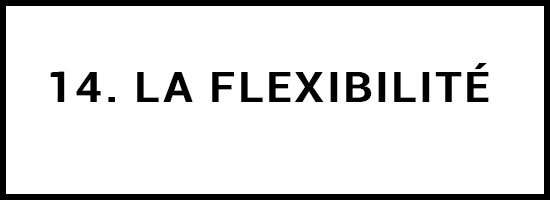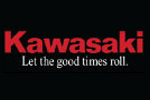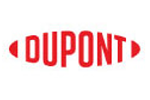Why think differently?
Most mistakes in business decisions come from thinking errors. If you want to improve your results then De Bono's tools for thinking fast and well are available.
Dr. Edward de Bono helps you unravel the mystery of “Why do some people always seem to have new ideas while others, of equal intelligence, never have?”; then, to apply structured methods to generate innovative solutions.
De Bono asserts that "conventional vertical thinking often inhibits our ability to solve problems and come up with new ideas"; and, proves with its powerful and practical toolbox that lateral thinking is a technique that anyone can learn to benefit from it.
David Tanner, Former CEO of DUPONT says, "At Du Pont we have many good examples of how our technicians have applied Dr. de Bono's lateral thinking techniques to successfully solve difficult problems."
The tools you need to learn are:
LATERAL THINKING
| ALTERNATIVES | - Learn the "how" and the value of concept mining. - Use the concepts to create new ideas. |
| FOCUS | - No longer focusing only on the problems or the first definitions of an idea. - Learn the importance of redefining the goal. - Develop your own list of creative goals. |
| EXTRACTION OF CONCEPTS | - Learn to identify the concepts behind an initial idea to use them to dériver des idées à foison. |
| CHALLENGE | - Knowing how to constructively question traditional methods of thought. - Learn to free ourselves from our thought patterns. |
| RANDOM ENTRY | - Use random stimuli or inputs to create new connections where it seemed there is none. |
| PROVOCATION | - Do not be satisfied with deferring a judgment but to act actively. - Transform provocative ideas into practical solutions. |
| ASSESSMENT & TREATMENT | - Take an idea and Optimize its value, its exceptional character and shape it to make it practical. |
| HARVEST | - Consolidate, maximize the ideas generated by your creative brainstorming and turn the raw ideas generated into workable ideas. |
Advantages :
- Identify opportunities where others see only problems;
- Raise the productivity of teams;
- Cause and communicate strategic alignment;
- Develop leadership talents;
- Effectively manage decision-making processes;
- Systematically analyze all angles of a situation to act with success and serenity;
- Develop a critical and analytical mind;
- Efficiently manage meeting times.
Application areas
- Creation of new products and services: Case of Motorola in telephony
- Emotional intelligence;
- Innovation;
- Research and development; Dupont case
- Product improvement, Development of new products and services;
- Coaching and Consulting;
- Risk and project management;
- Creation and management of skills;
- Management of cultural differences (Multi country, culture, etc.);
- Organizational and cultural management change; ABB CASE
- Creation of new products and services: Case of Motorola in telephony
- quality and continuous improvement.
THE SIX HATS OF REFLECTION
« Intelligence is something we are born with. Thinking is a skill that must be learned. » – Edward de Bono –
the six hats is a high-performance, structured approach that generates efficiency and increases your effectiveness tenfold. The training provides you with a powerful and practical toolbox that can be immediately used alone or in a team.
The training helps you to get out of the antagonistic mode of thinking of challenging and proving who is right and who is wrong in order to focus everyone's attention and have fruitful exchanges as well as real results-oriented conversations. In doing so, you develop team spirit, buy-in and generate innovative ideas.
For Dr. Edward de Bono, most mistakes in business decisions come from thinking errors. The Six Hats Process ensures that the results of reflection are solid and teaches teamwork at the most basic stage of work - the thinking process. The Six Hats is
- A language of thought
- An excellent tool for team reflection and constructive dialogue - demanded by BOEING unions during negotiations
- A good introduction to creative thinking methods
- A proven assessment tool - confirmed by David Tanner, Founding Director, DUPONT Center for Creativity & Innovation which testifies "At DUPONT, we have eliminated 9 stages of the Kevlar manufacturing process which has saved our company $ 30 million per year. "
- Save time for meetings. attested by ABB, which using the tool, now holds annual multinational discussions in 2 days which were held over 30 days previously.
The Hats are structured to help you methodically analyze all aspects of a situation.

GREEN HATS

WHITE HATS

BLACK HATS

YELLOW HATS

RED HATS

BLUE HATS
Advantages :
- Understand yourself and others
- Create and preserve trust, collaboration, and a peaceful social climate
- Manage your thought process and succeed in your negotiations
- Facilitate working relations, respect and courtesy
- Think quickly, clearly and objectively
- Reduce meeting times while increasing productivity
- Identify opportunities where others see only problems
- Ensure the completeness of your analyzes and Make the right decisions
- Think outside the box to identify alternatives
- Avoid censorship of new, disturbing, unusual ideas
- Neutralize the ego and promote group performance
- Maximize collaboration and minimize counterproductive behavior
- Systematically consider issues, problems, decisions, and opportunities
- Use Parallel Thinking in a team or alone to stimulate innovation by generating more ideas and better ideas quickly
- Create dynamic results and results-oriented meetings that encourage participation;
- See problems from new and unusual angles.
Application areas
- Creativity and innovation
- Animation of productive meetings, effective strategic retreats
- Critical analysis, problem solving and successful management of decision-making processes
- Increasing employee autonomy and participation: The case of the Karee mine, South Africa
- Management of jury debates and reinforcement of the capacity for balanced decisions;
- Leadership, teamwork and collaboration development
- Improved Communication;
- Development of team productivity and high performance teams;
- Management of relations between management and unions: Case of BOEING;
- Product improvement, Development of new products and services;
- Risk and project management;
- Creation and management of skills;
- Management of cultural differences (Multi country, culture, etc.);
- Cultural change.
COURSES IN CREATIVITY
Left on its own, the brain invariably falls back on its old ways and ideas; so much so that creativity does not come naturally to most people.
So if creativity is not an innate talent that comes from birth and is a skill that can be learned, then with practice anyone can become a thinker. créatif fécond. C’est le but du Cours en Créativité.
The Creativity Course is the sum of two of Dr. Edward de Bono's powerful thinking programs: Parallel Thinking or Six Hats of Reflection, and Lateral Thinking which is the innovation and creativity program. “Voir vidéo Edward de Bono sur la pensée créative”
CoRT - COGNITIVE RESEARCH TRUST
Equip the children
This program is for children aged 8 to 18, the leaders of tomorrow.
Cognitive Research Trust - Cognitive Research Team - is a thinking learning program that was developed with schools in mind and is now widely used around the world: Australia, New Zealand, Japan, Malaysia, Singapore, South Africa. South, Italy, Great Britain and Northern Ireland, Ireland, Canada, United States, Venezuela, Philippines, etc. starting from the observation of Dr de Bono who says: “Most errors of ordinary thought (apart from technical questions) are errors of perception. The weight traditionally attached to logic does not significantly improve perception. If the perception is wrong, even perfect logic cannot compensate for this deficiency. Perception is a matter of directing attention. If you don't look in the right direction, no matter how smart you are, you won't see what you need to see. "The mind can only see what it is ready to see. Edward de Bono
The CoRT program has six parts, each of which contains ten lessons.
The first part is devoted to "broadening your perception". Here we have a few simple attention tools.
- PMI, a tool used to intentionally search for pluses, minuses, and points of interest, and which allows a person to properly assess suggestions instead of following emotional first impressions and using reflection only to defend that point of view.
- C&S (consistency and sequence) which aims to draw attention to the consequences of actions.
- APO to draw attention to others involved and their perspective. This tool is tested in various situations in order to develop a skill that can be transferred to real life situations - what is actually happening.
- FIF - First Important Priority
- APC - Alternatives, Possibilities, Choices
- OPV - Opinion, Point of View of Other People.
David Perkind, professor of educational pedagogy at Harvard University, in his book Outsmarting the IQ “(NY, Free Press, 1995) wrote of CoRT:“ In its approach to teaching thought in practice, Edward de Bono repeatedly emphasizes the importance of solid educational material that can be delivered to destination without difficulty. This is certainly one of the hallmarks of the CoRT program. The CoRT program addresses very clearly the typical characteristics of thinking described in the previous chapter: rushed, narrow, fuzzy and sloppy thinking.
The four traps of intelligence are huge: they leave room for all kinds of misadventures and different types of thinking. However, the CoRT covers them all. Intelligence can be taught with CoRT. "
Historically, education has always been linked to the administration and absorption of knowledge. The aim of education is to provide knowledge to its users. It is easy to learn because knowledge can be written in books. It's also easy to test.
LEADERSHIP
Leadership is a series of courses which aims to strengthen the capacities of managers in the management and mobilization of their employees to achieve the best performance. It also contains lessons to help the new Manager acquire the behaviors expected in his new functions.
The great business leaders agree in recognizing that "soft skills" that is to say "soft skills" or behavioral are necessary and essential to the success of the Manager. In fact, for several decades, professions have changed rapidly, working methods have evolved and call for a perpetual renewal of the skills required. The face of companies is changing rapidly today and soft skills appear to be essential assets for adapting to these changes.
The basic module is used to discover the concepts of how leadership works and how to apply approaches that benefit both leaders and employees!
The complete course is done in several workshops for the leader to whom everything does not come naturally and who is eager to build and perfect himself. Each workshop deals with at least 3 themes selected to cover the fundamentals. Tailor-made workshops are offered because the list of soft skills essential to the success of a Manager varies according to the schools of thought to suit the surrounding culture. The list of fifteen (15) soft skills below encompasses and ticks the boxes of all streams of thought:















Objectifs
Each package is different and the basic formula includes the following skills.
- Define leadership
- Make an inventory of your needs
- Help develop an action plan to improve your skills
- Learn to manage others
- Learn to resolve conflicts
Use techniques to motivate your teams to perform
OUR TRAINING - SOFT SKILLS
General and managerial skills for success
TRAINING AGENDA
USERS ACROSS THE WORLD DE BONO TOOLS
















